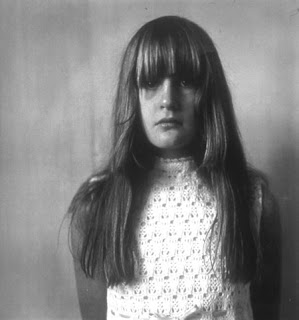In photography, a portrait is a picture of somebody, like a painted or drawn one. A portrait is to get the 'real' or 'natural' side of the person. Trying to get the portrait can be hard, as most people pose for the camera.
There is a portrait photo that Tony Voccaro took of Pablo Picasso, which he tried to get the normal expression of him, but picasso kept of 'posing'. So what Tony done was pretended that there was something wrong with the camera, which then picasso dropped his arms and came out of the 'pose', so Voccaro took the picture and that was the one he wanted.

Context:
You find portrait photo's everywhere. Everyday life you will see photo's in portrait form, let it be passport photo's, driving license photo's to photo's on your college and work i.d.
The reason why portrait form is so widely used is because you can fit more of the persons body and head in. Usually, on identification cards, the photo will be taken from the shoulders up. In other portrait photo's, you will see the whole person in it. Also, in art galleries and photo books, you would mostly see portrait photos.
Techniques:
In portrait photography, you mainly only capture the persons face and part of there shoulders, but on some occasions you would capture the whole body.
The difference between portrait and landscape is the orientation of the page. Portrait is where the paper is up right, and landscape is where the paper is on its side.
Photographers work
Diane Arbus -

Arbus was taking photos of this family, and in this picture the girl was unaware and is not 'posing' as such.
Walker Evans -

Richard Avedon -

Tony Vaccaro -

Larry Clark -

The person in this picture is part of the 'family' and is not an outside person coming in to take pictures. His pictures are unique as they are personal.




